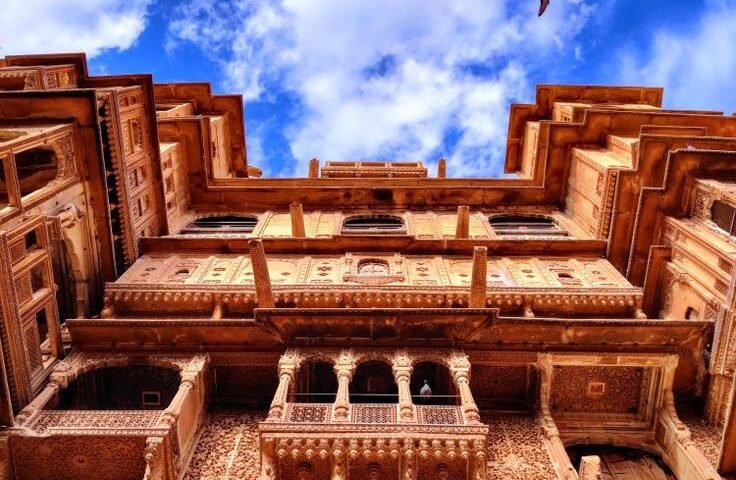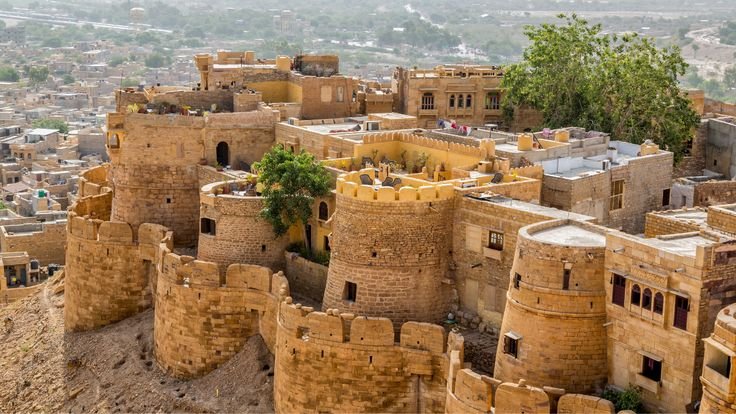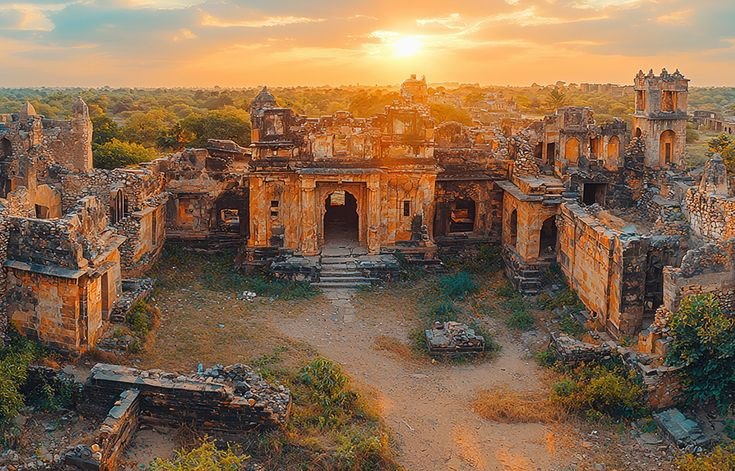Patwon Ki Haveli Jaisalmer: 2025 Guide to Merchant Marvel

Bada Bagh Jaisalmer: A Timeless Tribute to Rajput Valor
July 2, 2025
Kuldhara Village: Rajasthan’s Haunted Heritage Tale
July 19, 2025Tucked inside the ochre-golden lanes of Jaisalmer’s old city, Patwon Ki Haveli is not one mansion but a lavish cluster of five. Commissioned by the wealthy Jain trader Guman Chand Patwa in the early 19th century, these sandstone townhouses form Rajasthan’s earliest and grandest haveli complex. Ornate jharokhas, lattice screens, mirror-work, and wall frescoes whisper stories of silk-route affluence, social rituals, and Indo-Islamic craftsmanship. Whether you’re on a short Jaisalmer Tour or researching living museums of Indian trade, this guide walks you through everything—history, architecture, visiting details, and insider tips.
Table of Contents
1. A Snapshot of Patwon Ki Haveli History
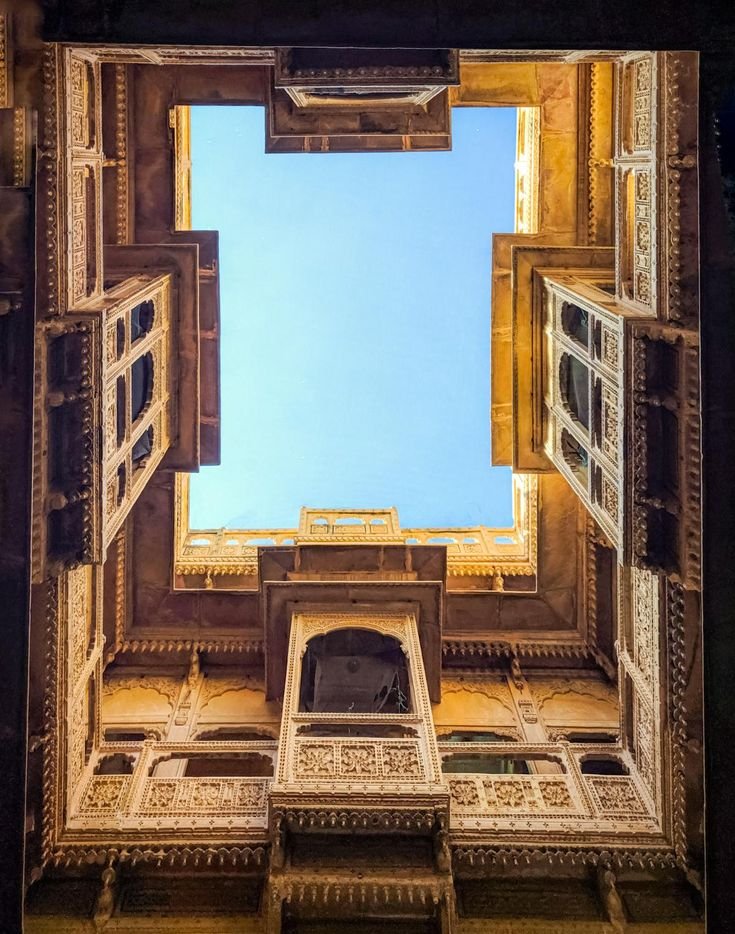
Long before “luxury” became a buzzword, the Patwas were exporters of gold brocade and fine textiles. Beginning in 1805, Guman Chand Patwa built five adjoining mansions—one for each of his five sons—over roughly 60 years. This lineage-based expansion explains why each haveli flaunts a distinct personality yet shares an overall façade of honeycomb balconies and filigreed arches. Scholars regard the complex as the transitional link between medieval Rajput building styles and later British-influenced urban homes. (Primary keyword used once: patwon ki haveli history)
Key Architectural Highlights
- Jharokhas & Jaali Screens – Intricately carved sandstone projecting windows allowed the women to watch street life unseen, blending privacy with ventilation.
- Gilt Mirror-Work – Vibrant chambers on the upper floors feature Rajasthani mirror mosaics echoed by Mughal patterns.
- Street-Facing Façade – The 50-plus balconies resemble a jewellery box, making this the most photographed haveli façade in India.
2. Jaisalmer Fort to Patwon Ki Haveli Distance
The complex sits just 1 km northeast of the fort’s Gopa Chowk gate—a pleasant 10-minute walk past bustling bazaars. Auto-rickshaws quote ₹50–60 for a short hop, but strolling lets you soak in medieval alleyways, turbaned shopkeepers, and spice-laden aromas. (Primary keyword used once: jaisalmer fort to patwon ki haveli distance)
3. Timings & Best Hours to Visit
- Opening Hours: 9:00 a.m. – 5:00 p.m. daily
- Ideal Slot: Arrive between 9:00 – 10:00 a.m. for soft light on the façade and fewer tour groups.
- Photography Window: Late afternoon (3:30 – 4:30 p.m.) bathes the sandstone in a molten-gold glow ideal for portraits.
4. Entry Fee
Visitors can explore Patwon Ki Haveli at price starting from:
- Indian Adults: ₹100
- Indian Children (5-12 years): ₹50
- Foreign Nationals: ₹250
- Camera Charges: Still photography ₹100, Video recording ₹250
5. What to Expect Inside
Step through the narrow carved doorway, and the outside bustle fades into quiet courtyards. Highlights include:
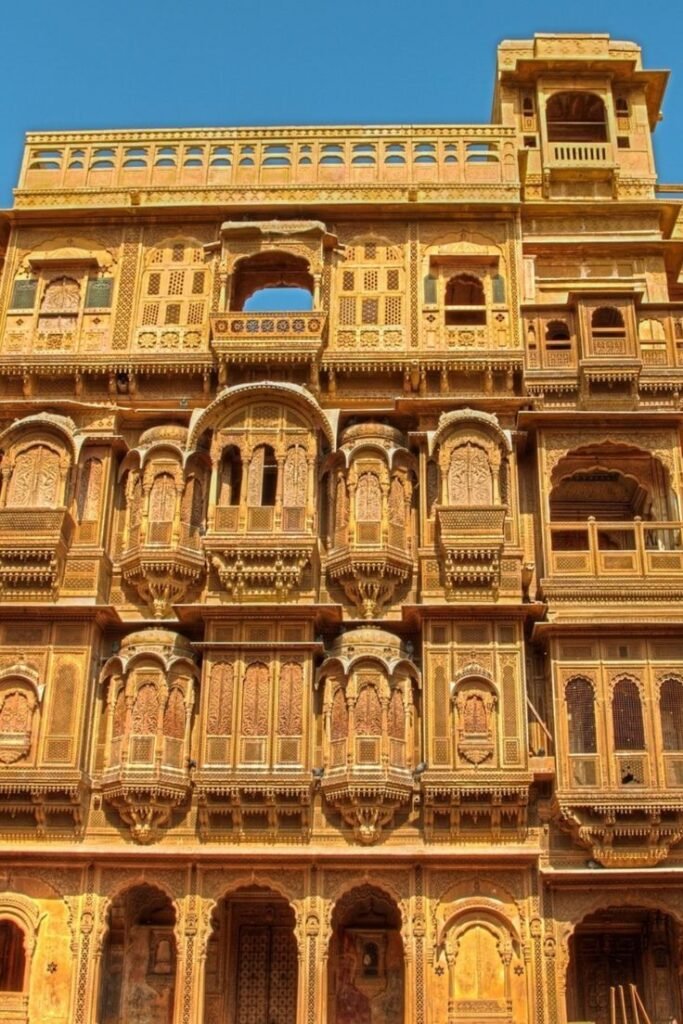
- Kothari’s Patwa Haveli Museum (Haveli #1)
- Displays silk brocade samples, opium-weighing scales, and antique furniture.
- The Sheesh-Mahal room’s mirror-panelled ceiling dazzles like a Rajasthani Milky Way.
- Displays silk brocade samples, opium-weighing scales, and antique furniture.
- Tapestry & Mirror Gallery (Haveli #2)
- Frescoes depict camel caravans, British officers, and mythic tales.
- Look for Persian-influenced floral motifs intertwined with Jain icons.
- Frescoes depict camel caravans, British officers, and mythic tales.
- Merchant’s Treasury Room (Haveli #3)
- Secret wall niches once stashed raw silver coins; guides reveal hidden panels.
- Secret wall niches once stashed raw silver coins; guides reveal hidden panels.
- Women’s Zenana Quarters (Haveli #4)
- Delicate jaali partitions allowed cross-ventilation without compromising purdah customs.
- Delicate jaali partitions allowed cross-ventilation without compromising purdah customs.
- Rooftop Panorama (Haveli #5)
- Offers sweeping views of Jaisalmer Fort, Gadisar Lake dome, and distant Thar dunes—perfect at sunset.
- Offers sweeping views of Jaisalmer Fort, Gadisar Lake dome, and distant Thar dunes—perfect at sunset.
6. Practical Tips for a Smooth Visit
- Dress Code: Light cottons are ideal; shoulders and knees covered earn local goodwill, especially in fresco rooms depicting deities.
- Footwear Etiquette: Some chambers request shoe removal; carry a small bag to avoid lost footwear.
- Guides vs Audio Guides: Licensed guides charge ₹300–400 per group and often bundle rooftop access. Audio guides (English, French, Hindi) are concise but lack anecdotal spice.
- Hydration: Daytime highs cross 42 °C in summer; carry water but avoid littering—bins near ticket counter.
- Weekends & Festivals: Expect larger crowds during Diwali and Desert Festival; pre-book skip-the-line tickets through a reputable Tour Operator in Jaisalmer for hassle-free entry.
7. Combining Patwon Ki Haveli with Other Sights
- Nathmal-Ji-Ki Haveli: 700 m away; famous for twin sculptor brothers who worked independently—note the asymmetry.
- Salim Singh Ki Haveli: 1.2 km south; peacock-style arched roof distinctive against the skyline.
- Gadisar Lake: A 15-minute stroll; sunset boat rides offer mirror-like reflections of temple chhatris.
- Local Bazaars: Shop for embroidered wall hangings, leather jootis, and miniature camel bone artefacts.
Plan a half-day loop, starting at Patwon Ki Haveli, breaking for Rajasthani thali at Kaku’s Café, and finishing with a twilight fort silhouette at Gadisar’s banks.
8. Responsible Travel & Preservation
Unlike government-run forts, Patwon Ki Haveli’s upkeep relies heavily on ticket revenue and responsible tourism. Help conserve by:
- Avoiding flash photography on ancient pigments.
- Refraining from touching frescoes—skin oil accelerates decay.
- Buying local handicrafts directly from artisan cooperatives to support heritage livelihoods.
- Using refillable water bottles; filtered water kiosks are available near the entrance.
Conclusion
From mesmerizing stone filigree to whispers of prosperous trade caravans, Patwon Ki Haveli Jaisalmer condenses centuries of desert-frontier opulence into a single city block. Pair your visit with the fort’s ramparts and moonlit dunes, and you’ll weave a tapestry of experiences where art, commerce, and community intersect. Whether you’re mapping out a family getaway, curating a history vlog, or planning a bespoke Jaisalmer Tour, this haveli promises golden memories under the Thar’s eternal sun.
Frequently Asked Questions
1. What is the best time to visit Patwon Ki Haveli?
Morning hours between 9:00 AM and 11:00 AM are ideal for soft lighting and fewer crowds.
2. How much time is needed to explore Patwon Ki Haveli?
You should set aside at least 60-90 minutes to tour the complex at a relaxed pace.
3. Is photography allowed inside Patwon Ki Haveli?
Yes, photography is allowed inside Patwon Ki Haveli. However, camera charges apply — starting from ₹50 for still photography and ₹100 for video recording.
4. Can I hire a guide at Patwon Ki Haveli?
Yes, local guides are available at the site at price starting from ₹300, or you can choose an audio guide.
5. Is Patwon Ki Haveli suitable for children?
Yes, children can enjoy the architectural marvels, but supervision is advised due to narrow stairs.
6. Is Patwon Ki Haveli wheelchair accessible?
Unfortunately, the narrow passages and steep stairs make it difficult for wheelchair users.
7. Are there any shops inside Patwon Ki Haveli?
Yes, small souvenir shops selling handicrafts, textiles, and miniatures are located within the complex.

